There’s no denying the fact that drones are a brilliant tool for a filmmaker to have in their arsenal. In recent years, drones are now equipped with higher resolution cameras as well as capable of longer flight times. Some even have intelligent flight modes which give you clean, stable shots with minimal effort. There has never been a better time to be an aerial filmmaker! Thanks to these technological advancements, anyone can get expansive landscape shots, birds eye view shots and a wide array of others. The world is literally your oyster in the world of drone filming!
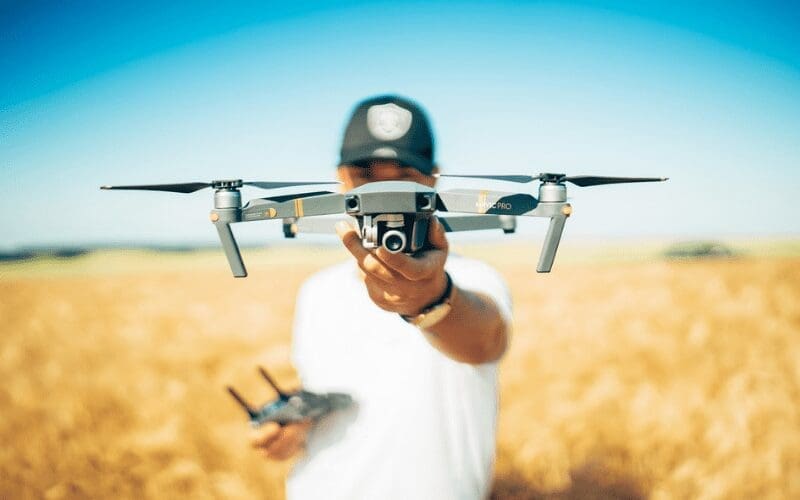
However, shooting high-quality aerial film isn’t as straightforward as simply hitting the record button and flying around for a few minutes. Like everything, drone filming requires a decent amount of practice, planning, and time.
In this article, we’re going to take a look at the benefits of drone filming, what laws to be aware of, and our drone film guide. Stay tuned until the very end so you don’t miss any key information!
What Is A Drone?
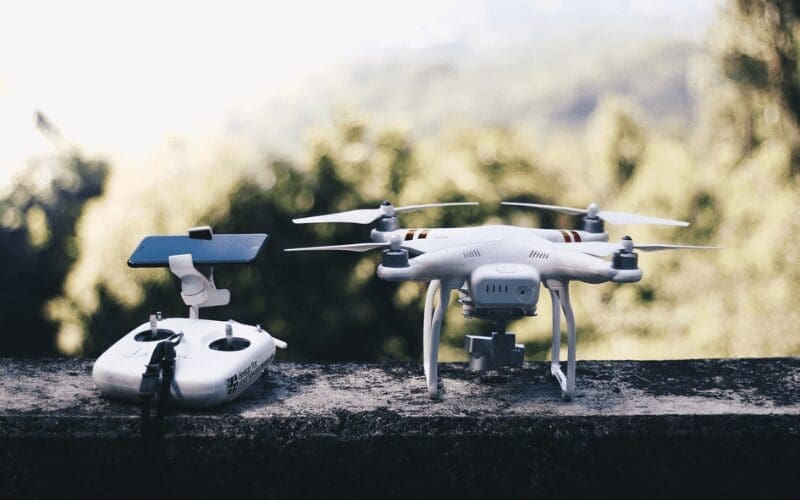
A drone, in technological terms, is an unmanned aircraft. A drone is essentially a flying robot that can be remotely controlled or fly autonomously through software-controlled flight plans.
Drones have become considerably cheaper in recent years. This makes them more accessible to the average joe and makes them a beneficial tool for filmmakers on a budget.
What Are The Benefits Of Drone Filming?
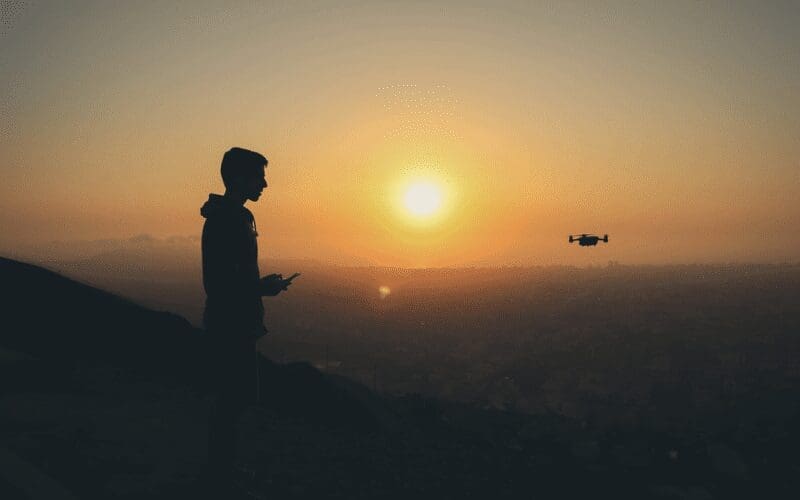
Drone filming is a dynamic type of aerial filming with several benefits for filmmakers.
We have outlined some of this benefits below:
- Reduced cost for aerial footage in comparison to helicopters.
- You’re able to film in small or confined spaces that helicopters cannot access.
- Capture new perspectives outside the usual vision from the ground
- You’re able to shoot many different things from the air, such as landscapes, sporting matches, and buildings.
The Laws Of Drone Filming
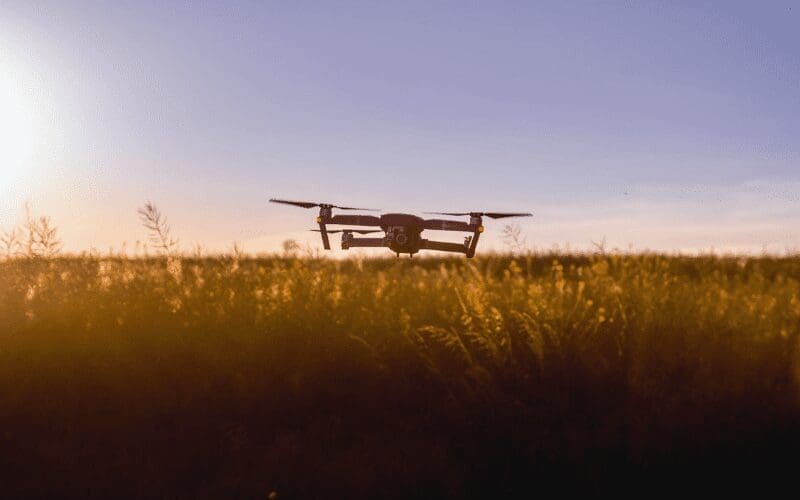
The laws of drone filming will change depending on your location. It would be worth your time to Google the laws regarding your specific location.
Despite this, you should always follow these general guidelines:
- Know how to operate your drone safely and do so at all times.
- Understand your legal requirements.
- Keep your drone in sight at all times.
- Be aware of your surroundings.
- Keep your drone away from aircraft, airports, and emergency response efforts.
- Don’t fly your drone close to people, buildings, or vehicles outside your control.
- Do not fly over people, unless you have an FAA waiver.
- Fly during the day, 30 minutes before sunrise, or 30 minutes after sunset, unless you have an FAA waiver.
- Fly no higher than 400 feet and no faster than 100 mph.
- Ensure all footage captured doesn’t violate privacy laws.
- Have a plan for addressing problems, such as unexpected crashes or power losses.
Next, we’re going to take a look at our drone film guide.
How To Film With A Drone
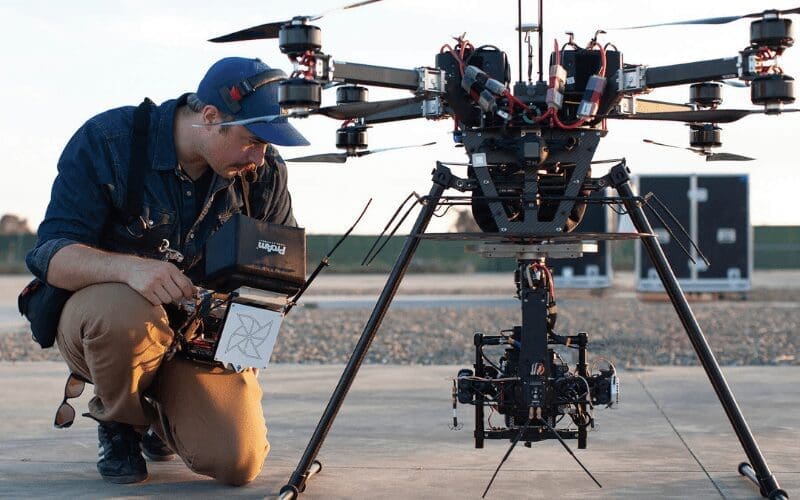
Now we have got the laws out of the way, let’s move onto the fun stuff!
Here we will provide you with a step-by-step guide on how to film with a drone. Let’s start with the pre-production stage!
Pre-Production
The pre-production phase can ultimately make or break your film. When drone filming, we always recommend having a plan to ensure that your shoot goes swimmingly.
So, follow the simple steps of our drone film guide and you shouldn’t have any trouble at all!
Decide On Your Film’s Story & Message
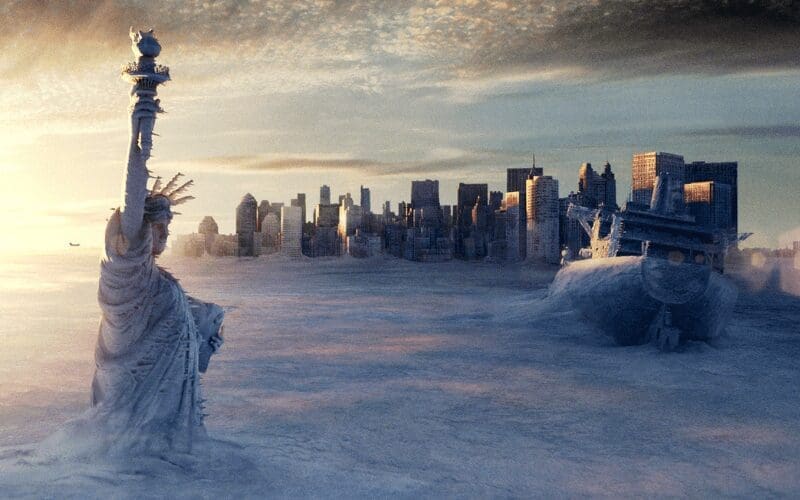
Like any good film, a good story is detrimental to make it as captivating as possible.
Whether the story concerns a place, event, or following a narrative is entirely up to the filmmaker.
Location Scouting
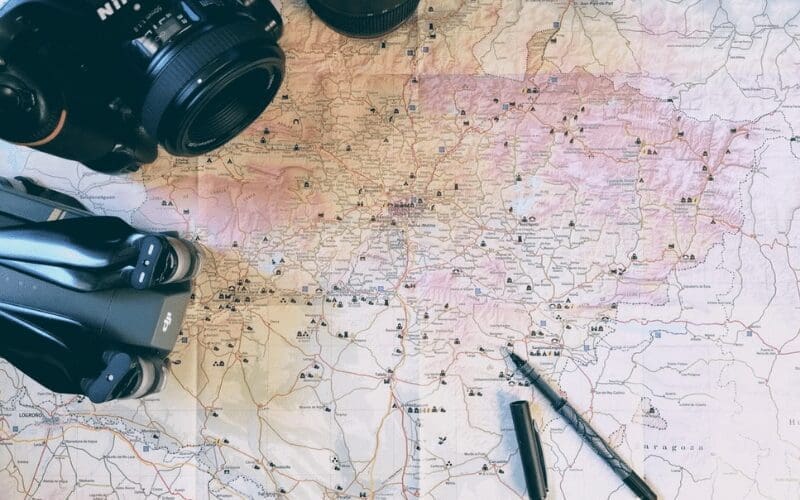
Doing some location scouting will allow you to find the best place possible that suits the mood of your film. We recommend going there in person and taking some photographs. You could perhaps even do this with your drone and take it for a test spin.
After you have done this, you know exactly what the location looks like and will be able to tailor your shot list accordingly.
If you’re unable to visit your potential location in person, you can always use Google Maps. You can set the map to a ‘satellite’ view and this will show you an actual image of the place and allow you to get familiar with the land.
If you would like to learn more about location scouting, check out our article on Location Scouting Tips For Film for everything you need to know!
Make A Shot List
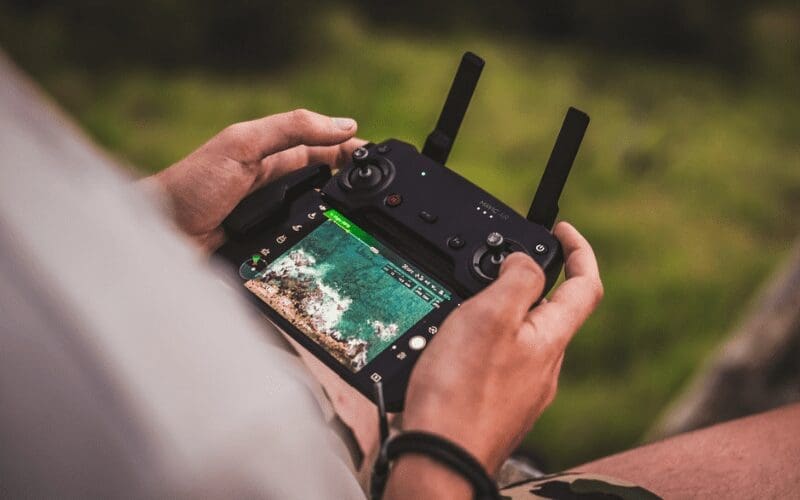
Additionally, we recommend planning exactly what shots you’re going to be recording on the day of your shoot.
Of course, get creative and allow yourself some time to scope out some angles that you may not have thought of. But for the most part, it is best to have a pretty solid idea in mind of what you’re going to be filming.
A shot list means you know clearly what you’re going to be shooting. This allows you to go from shot to shot with minimal time wasted.
Permission
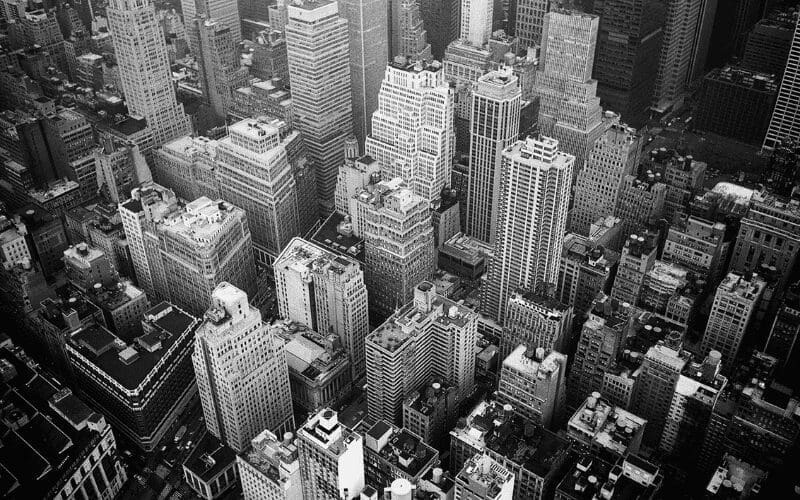
Depending on where you plan to fly your drone, you may need to get permission first.
The last thing you want to happen is to have to stop shooting or receive a hefty fine!
Do You Have The Right Drone?
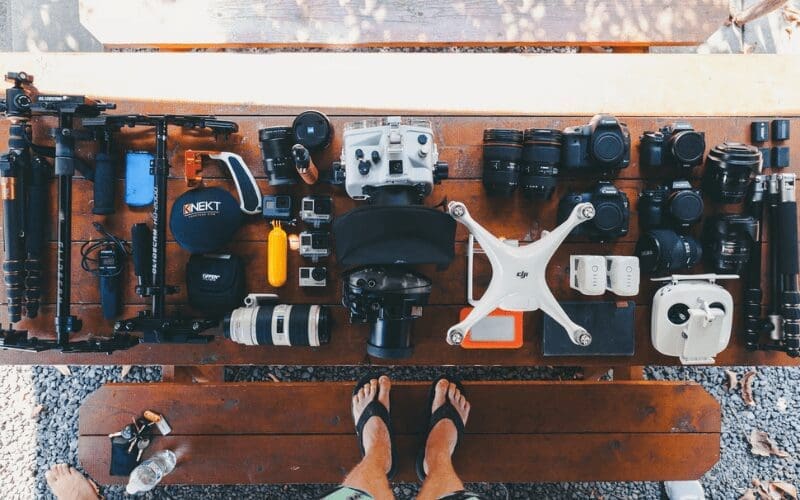
The quality of footage you’re able to record heavily depends on the quality of your drone.
When you buy a drone for aerial cinematography, make sure the drones’ camera is attached by a gimbal stabilizer. This is vital as it keeps the camera steady when you’re in the air.
Consequently, this makes your footage look more stable and professional.
Production
Next, we will run through some shooting tips for drone film making to get high quality aerial footage for your film.
Let’s get into the production stage.
Utilize 2-Axis Of Movement
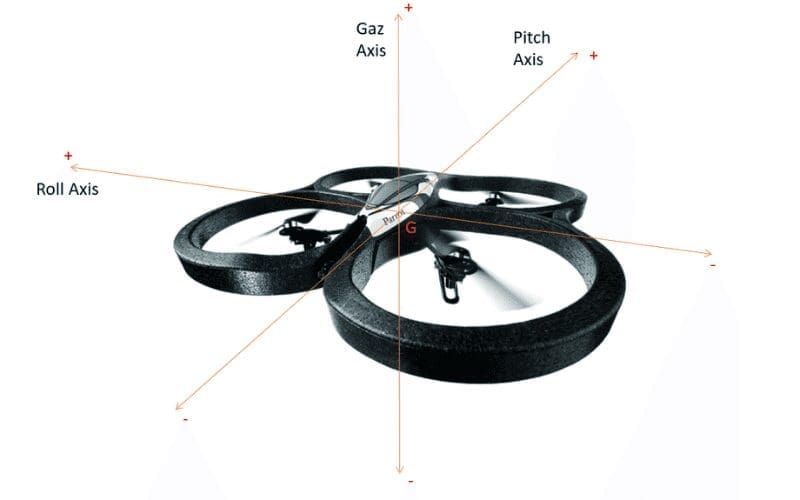
In high-budget Hollywood movies, aerial cinematographers tend to incorporate 2-axis of movement. When you shoot your film, try to mimic this technique.
This can be achieved by tilting the camera whilst the drone is moving. This creates more movement in your shot and looks extremely professional.
Golden Hour
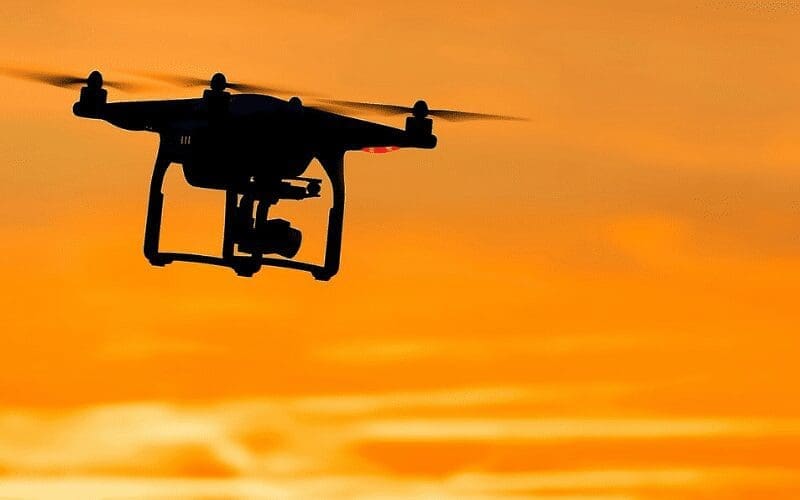
The golden hour is the first hour after sunrise and the last hour before sunset. During this time period, the sun naturally tints the sky orange and red tint which looks great when captured on film.
Shooting during this time makes your footage more aesthetically interesting and appealing with minimal effort.
Shoot In The Right Weather Conditions
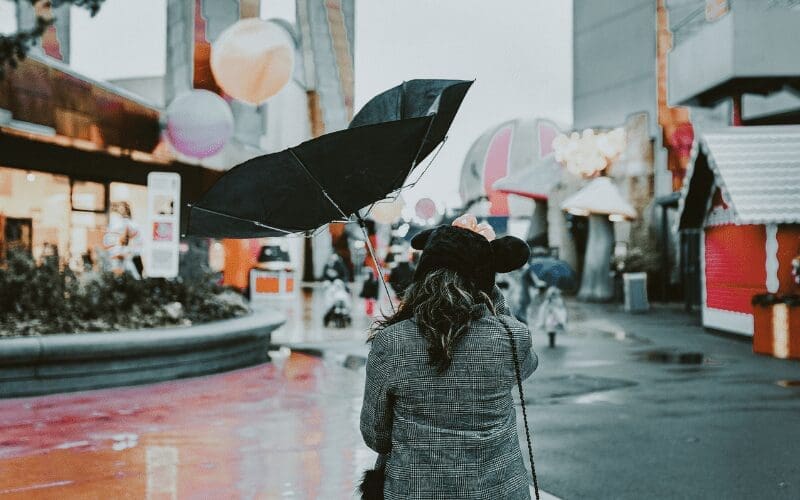
Modern drones tend to come with high-quality gimbal stabilizers that work to keep the camera steady. While they are great, they are not perfect. If the winds are too high the drone may get blown around.
This could potentially result in your footage looking jolty and therefore, unprofessional.
This could not only ruin your shot but perhaps your entire day’s shooting. A few days before your shoot, keep an eye on the weather forecast. If you can predict that the conditions aren’t going to be great, then it is worth postponing the shoot until a later date.
In addition, if you shoot on a grey, overcast day, this is going to have an effect on the overall feel of your film.
We think it’s best to shoot when the conditions are bright. Especially if you’re focusing your film on a specific location since you want it to look as nice as possible.
Have The Right Camera Settings
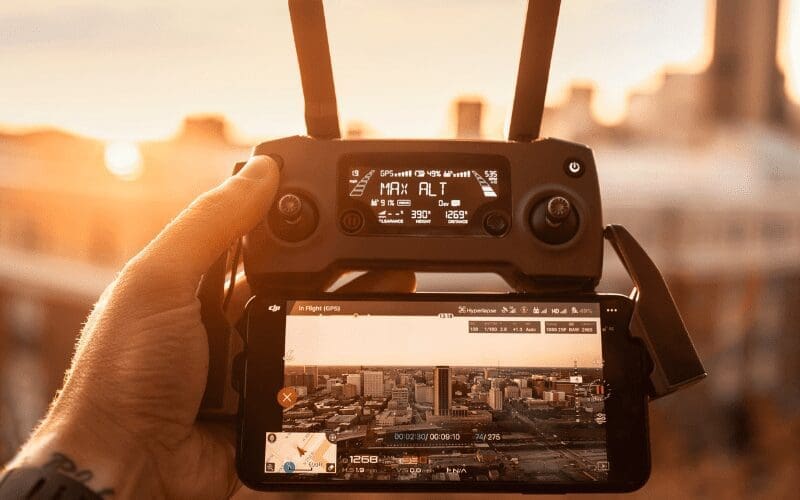
This may sound obvious, but it’s easy to take off and start flying without taking the time to adjust your camera settings. Try and always shoot with the lowest ISO possible, as the higher it is, the grainier your footage will look.
Similarly, if you’re wanting to shoot some slow-motion shots, make sure you set your drone’s camera to record at a higher frame rate. This one’s always easy to forget, so have it included in your pre-flight checklist.
Use The Rule Of Thirds
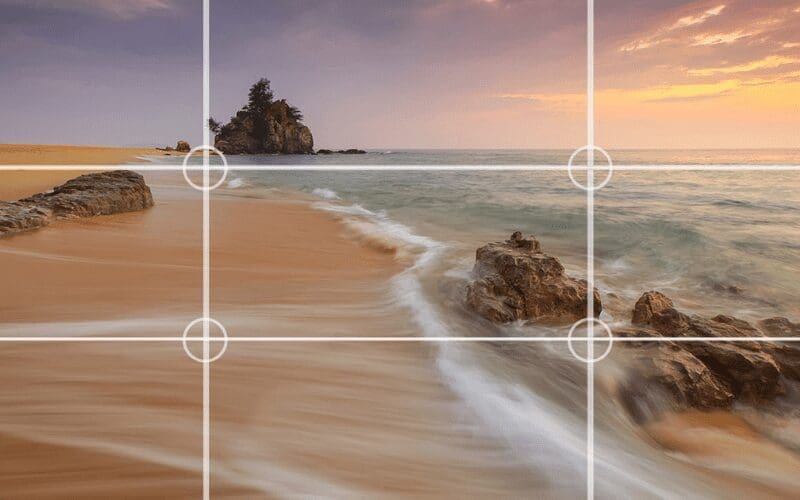
The rule of thirds is a commonly used tool for both photographers and filmmakers alike. As the name suggests, the basic idea behind it is to break the image down into thirds.
On most drones, you should be able to set your display to ‘grid mode’. This will section your screen into 9 parts, with two vertical lines and two horizontal lines.
Place your subject either on one of these lines or where two of these lines intersect one another. This is because our eyes naturally fall onto these lines and intersections. So, if the subject is placed there, audiences will find it more aesthetically appealing.
Of course, you don’t always have to stick to this rule; after all, rules are made to be broken. Wes Anderson is a perfect example. This legendary director is famous for breaking this rule as he opts to use symmetry over the rule of thirds.
5 Drone Shots To Master
These are some key shots which will benefit your film massively if you get them down.
Let’s begin with Birds Eye!
Birds Eye

This shot is pretty self-explanatory and is one of the easiest shots to get right. Simply tilt your camera all the way down, so it is directly pointing down towards the ground.
After this, you have various options in terms of movement with a bird’s eye shot.
You can either track the subject if it’s moving, keep the drone stationary or you can increase or decrease the altitude of the drone.
Reveal
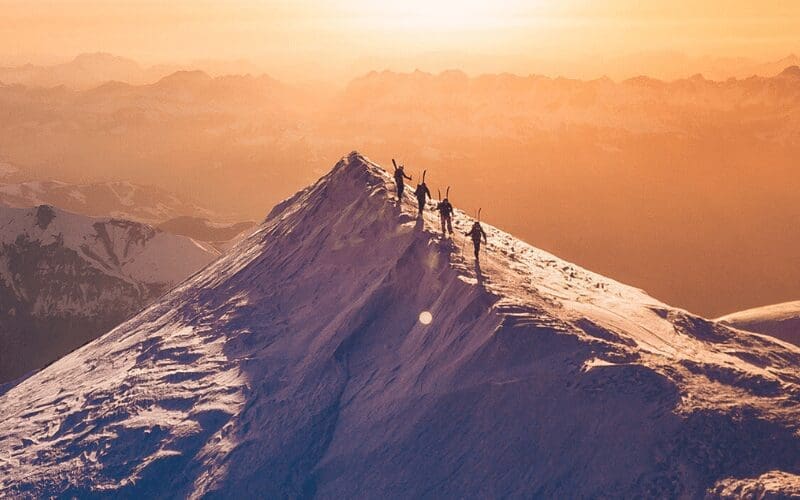
There are numerous ways you can do a ‘reveal’ shot. You can fly your drone backward over the subject of your shot until it comes into the frame.
Alternatively, you can utilize your drone’s gimbal movements to reveal the subject of your shot. No matter how you do it, just ensure whatever you reveal is interesting and worth a ‘reveal’ shot.
Flying Backwards
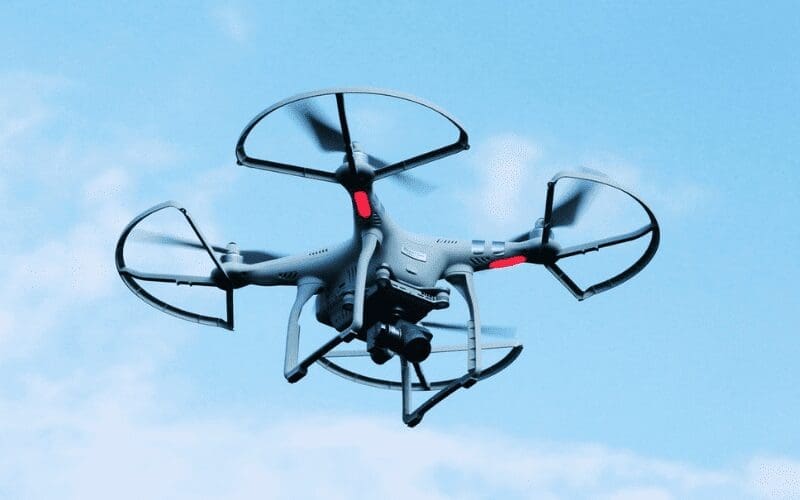
This is a straightforward, yet effective shot that all drone pilots should utilize. When you film with a drone, it is worth trying to fly backward at all times. This is due to the propellers sometimes intruding on your shot when you fly forwards. This ultimately ruins the shot’s effect.
Similarly, it also prevents the camera picking up prop shadows.
Orbit
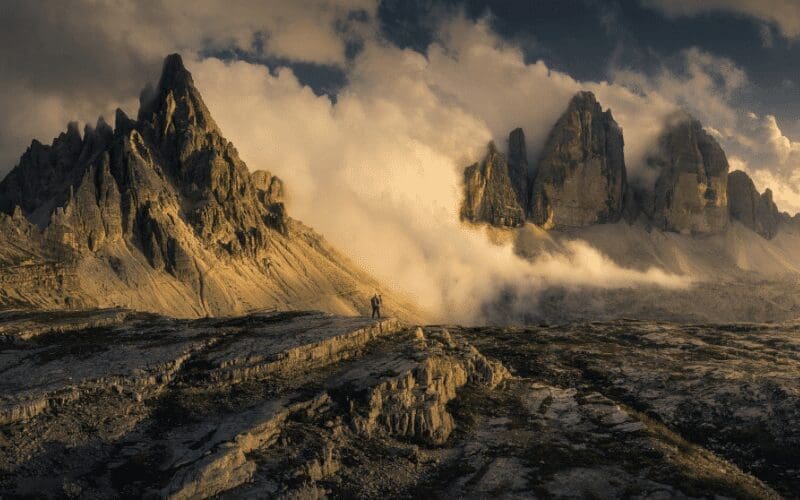
Most drones will come with an array of intelligent flight modes straight out of the factory. One of the most common modes is ‘orbit’ or ‘point of interest’. This is when your drone circles an object whilst keeping that object center-frame.
This shot looks extremely cinematic and is very easy to pull off, especially if your drone has some intelligent flight modes.
Post Production
Now you have all of your shots, it’s to the editing room. Using any kind of software, such as Adobe Premier, you can carry out the typical post production tasks.
This includes any color correction, changing the aspect ratio, etc. Most editing software also has stabilizing engines, so it will make your shots look as smooth as possible.
That Was Our Drone Filming Guide
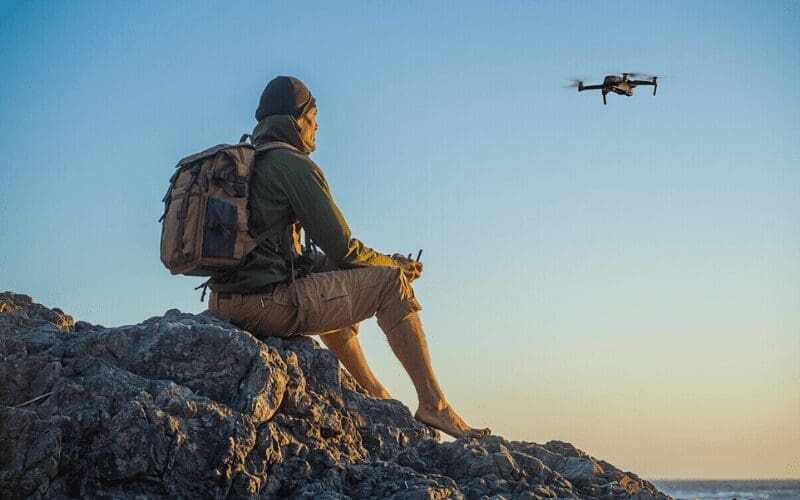
So there we have it! We’ve gone through what drones are, to the laws you should be aware of when drone filming. Additionally, we have given you our drone film guide on how you can shoot the best film or music video possible.
So, what are you waiting for? Get yourself a drone today and shoot that epic film you’ve always wanted to! Just remember to implement all of our shots and follow our advice to get the best, most cinematic footage possible.
Would you like to read more exciting film and movie content? Then head over to the Мusic Gateway blog – we have got you covered! There’s a range of articles for you to check out. For example, the Best End Of The World Movies, Best Business Movies and so much more!









